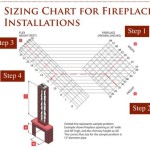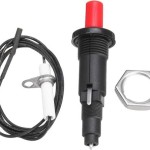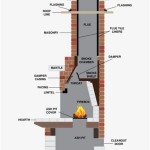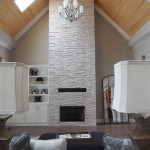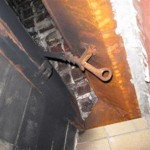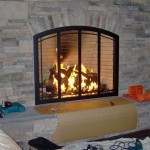Contemporary Propane Fireplaces: A Modern Hearth
Propane fireplaces have emerged as a popular heating and aesthetic solution for contemporary homes. They offer a blend of convenience, efficiency, and visual appeal, making them a viable alternative to traditional wood-burning fireplaces. This article explores the features, benefits, installation considerations, and maintenance aspects of contemporary propane fireplaces.
Advantages of Propane Fireplaces
Propane fireplaces offer several advantages over traditional wood-burning fireplaces. These advantages contribute to their growing popularity in modern homes.
Clean Burning: One of the most significant benefits is their clean-burning nature. Unlike wood-burning fireplaces, which produce smoke, ash, and creosote, propane fireplaces emit significantly fewer pollutants. This results in cleaner indoor air quality and reduces the environmental impact. The combustion process is more complete, leading to minimal particulate matter released into the atmosphere.
Convenience and Control: Propane fireplaces offer unparalleled convenience and control. They can be ignited with the flip of a switch or the press of a button, eliminating the need to gather, store, and stoke wood. Many models come equipped with thermostats and remote controls, allowing users to precisely regulate the temperature and flame intensity. This level of control ensures optimal comfort and energy efficiency.
Ease of Installation: Installation is often simpler and less costly compared to traditional fireplaces. Vented propane fireplaces require a chimney or vent to expel exhaust gases, but ventless models can be installed virtually anywhere in the home, provided they meet specific safety requirements and local codes. This flexibility makes them suitable for a wide range of architectural styles and room layouts.
Versatility in Design: Contemporary propane fireplaces are available in a vast array of designs, styles, and sizes. From sleek, minimalist linear models to more traditional log sets, there is a propane fireplace to complement any decor. Manufacturers offer a variety of media options, including decorative glass, stones, and ceramic logs, allowing homeowners to customize the look and feel of their fireplace.
Cost-Effectiveness: While the initial investment in a propane fireplace can be significant, the long-term operating costs can be comparable to or lower than those of wood-burning fireplaces. Propane burns efficiently, and the ability to control the flame intensity allows users to regulate fuel consumption. Furthermore, the reduced maintenance requirements contribute to lower overall costs.
Types of Contemporary Propane Fireplaces
The market offers diverse types of propane fireplaces to meet various needs and preferences. Understanding the different types is crucial for selecting the most suitable option.
Vented Propane Fireplaces: These fireplaces require a chimney or vent to exhaust combustion gases to the outside. They typically offer a more realistic flame appearance and higher heat output compared to ventless models. Vented fireplaces are a good choice for homeowners who prioritize aesthetics and performance.
Ventless Propane Fireplaces: Ventless models do not require a chimney or vent, making them easier and less expensive to install. They operate by burning propane very cleanly and incorporating an oxygen depletion sensor (ODS) that shuts off the gas supply if the oxygen level in the room drops too low. Ventless fireplaces are well-suited for supplemental heating in smaller spaces.
Direct Vent Propane Fireplaces: These fireplaces use a sealed combustion system that draws air from outside and vents exhaust gases directly outside through a coaxial vent. Direct vent fireplaces are highly efficient and safe, as they do not draw air from the room or vent exhaust gases into the room. They are a popular choice for new construction and remodeling projects.
Linear Propane Fireplaces: Linear fireplaces are characterized by their long, horizontal design. They offer a modern and sophisticated look and are often used as a focal point in contemporary living spaces. Linear models are available in both vented and ventless configurations.
Insert Propane Fireplaces: These fireplaces are designed to be installed inside an existing masonry fireplace. They offer a convenient way to convert a traditional wood-burning fireplace to a more efficient and clean-burning propane fireplace. Insert models are available in various sizes and styles to fit different fireplace openings.
Installation and Safety Considerations
Proper installation and adherence to safety guidelines are paramount when installing a propane fireplace. Incorrect installation can lead to serious hazards, including gas leaks, carbon monoxide poisoning, and fires.
Professional Installation: It is highly recommended to hire a qualified and licensed technician to install a propane fireplace. A professional installer will ensure that the fireplace is properly connected to the propane gas line, vented correctly, and meets all applicable building codes and safety regulations. They will also perform a thorough inspection to ensure that the fireplace is operating safely and efficiently.
Ventilation Requirements: Vented propane fireplaces require a properly sized and installed chimney or vent system to exhaust combustion gases to the outside. The vent system should be inspected regularly to ensure that it is free of obstructions and in good working order. Ventless propane fireplaces should only be used in rooms that are adequately ventilated to prevent a buildup of carbon monoxide.
Clearances to Combustibles: It is essential to maintain proper clearances between the fireplace and any combustible materials, such as furniture, curtains, and wall coverings. The manufacturer's instructions will specify the minimum clearance requirements for each model. Failure to adhere to these clearances can create a fire hazard.
Carbon Monoxide Detectors: Carbon monoxide (CO) is a colorless, odorless, and deadly gas that can be produced by incomplete combustion. To protect against CO poisoning, it is essential to install carbon monoxide detectors on every level of the home, especially near sleeping areas. The detectors should be tested regularly and replaced every five to seven years.
Propane Gas Line Safety: The propane gas line should be inspected regularly for leaks. If a gas leak is suspected, immediately evacuate the premises and contact a qualified technician or the local gas company. Never attempt to repair a gas leak yourself.
Maintenance of Contemporary Propane Fireplaces
Regular maintenance is crucial for ensuring the safe and efficient operation of a propane fireplace. Proper maintenance will also extend the lifespan of the fireplace and prevent costly repairs.
Annual Inspection: It is recommended to have a qualified technician inspect the propane fireplace annually. The technician will inspect the gas line, burner, vent system, and other components for any signs of damage or wear. They will also clean the burner and pilot light and check the gas pressure to ensure that the fireplace is operating properly.
Cleaning: The fireplace should be cleaned regularly to remove dust, debris, and soot. The glass door can be cleaned with a glass cleaner specifically designed for fireplace doors. The burner and pilot light can be cleaned with a soft brush or vacuum cleaner. Avoid using abrasive cleaners or solvents, as they can damage the fireplace components.
Vent System Inspection: The vent system should be inspected regularly for obstructions, such as bird nests, leaves, and debris. A blocked vent can prevent proper venting of combustion gases and create a carbon monoxide hazard. The vent system should be cleaned as needed to ensure proper airflow.
Pilot Light Maintenance: The pilot light should be inspected regularly to ensure that it is burning cleanly and steadily. If the pilot light is flickering or going out, it may need to be cleaned or adjusted. Consult the manufacturer's instructions for guidance on pilot light maintenance.
Media Maintenance: Decorative glass, stones, or ceramic logs should be cleaned periodically to remove soot and debris. Follow the manufacturer's instructions for cleaning these media. Damaged or broken media should be replaced to maintain the appearance of the fireplace.
By understanding the features, benefits, installation considerations, and maintenance aspects of contemporary propane fireplaces, homeowners can make informed decisions about incorporating this modern amenity into their living spaces. The blend of efficiency, convenience, and aesthetic appeal firmly positions propane fireplaces as a viable and attractive option for heating and enhancing the ambiance of contemporary homes.

Hail The Queen Of Hygge Midcentury Modern Freestanding Fireplace Ashley Claire Real Estate Benchmark Realty

Enviro S Series Freestanding Gas Or Propane Fireplace Fireplaces By Cameron

Enviro Catalogue

One6 Vf SÓlas Contemporary Fireplaces

Natural Gas Fireplace Modore 140 European Home Propane Contemporary Closed Hearth

Linear Contemporary Fireplaces Friendly Fires

Contemporary Stand Alone Gas Fireplaces Solid Fuel Stove Free Standing Hampshire Stan Freestanding Fireplace Home

Linear Gas Fireplace Burner System Indoor

Natural Gas Fireplace Lucius 100 European Home Propane Contemporary Closed Hearth

50 Free Standing Ventless Gas Fireplace Visualhunt

